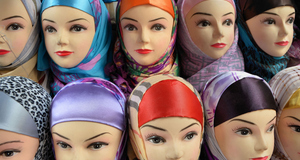Featured Article:Walking Gendered Lines: The Contradictory Expectations of Men Who Work in Early Childhood Education
By
2017, Vol. 9 No. 11 | pg. 1/1
IN THIS ARTICLE
Men who choose to work in Early Childhood Education (ECE) face both discrimination and a privileged status due to their under-representation in this gendered occupation. This lack of men working in ECE leads to their status as tokens, which in turn leaves them with a plethora of contradictions both in regards to how they are viewed by society as well as in how they are expected to represent themselves in the field. This paper aims to look at the expectations set forth for males working in ECE and how they affect the men’s willingness to enter the field, as well as the level of care they are able to provide once there. In order to fully address these issues, the ways in which traditional values and ideas of hegemonic masculinities affect men’s (and larger society’s) view of childcare influence men’s perceptions of this field as a career choice must also be addressed. Acker’s theory of gendered occupations will be used as a starting point through which these issues can be addressed. For the purposes of this paper the umbrella term “Early Childhood Education” (ECE) will be used to encompass all childcare centered work with children aged from infancy to eight years including caregivers, preschool teachers, and elementary teachers for kindergarten to grade three (Sargent, Paul 2004; Sargent, Paul 2005). Gendered OccupationsIn order for an occupation to be considered gendered it generally meets two main criteria: at least 85% of the members working in this field are of the same sex, and the work itself is defined in gendered terms (Sargent, Paul 2004; Sargent, Paul 2005). That is to say that these occupations are structured on assumptions of the workers being predominantly one sex, in this case, female. Often the tasks and duties of the workers will reproduce the gender regime of that occupation and workers will display traditional hegemonic ideals of gender in their work. Incumbents are thus forced to “do gender” in a way that mimics the larger gender regime of society. This means that in childcare gender is both created by the institution through different expectations of male and female workers, and at the same time created by the workers who actively reproduce these expectations. Often when thinking about gendered occupations, the conceptual image created is gendered; in this case, when we think about a person who is working in ECE the image is that of a woman (Murray, Susan B. 1996; Murray, Susan B. 2000; Sargent, Paul 2004; Sargent, Paul 2005).In Canada, the number of people working in elementary schools and secondary education in 2006 was over 468,000. Of these only 28% are male. When looking at principals and administrators in the same sector in the same year, this percentage goes up to 47%, whereas looking at elementary school and kindergarten teachers alone, the percentage goes down to 16%. Furthermore, only 7% of workers in childcare services and home support are male, and only 4% of early childhood educators and assistants in 2006 were male. When looking at the statistics for teachers or educators in Canada in 2006, a very obvious skew exists in favor of female workers, with the skew consistently becoming less and less as the ages of the children increase until finally the number of male workers surpasses those of women in university (Statistics Canada 2011). These numbers fulfill the first criteria of a gendered occupation and this pattern of skew is present in education in all major western societies, including North America, the United Kingdom, Europe and Australia (Murray, Susan B. 1996; Cameron, Claire 2001; Sargent, Paul 2004; Sargent, Paul 2005). This lack of men working in ECE has lead to their status as tokens within the ECE community and it makes it hard for administrators as well as parents and other workers to understand their role in ECE in non-gendered terms. According to Acker’s theory of gendered occupations, there are four overlapping processes that both create and maintain gendered organizations. These include: symbols, images and forms of consciousness; differential structural location of women and men; the internal mental work of individuals as they consciously construct their understanding of the organizations gendered structure; and the interactions among individuals (Murray, Susan B. 1996; Sumsion, Jennifer 1999; Murray, Susan B. 2000; Sargent, Paul 2005). We will begin by addressing the first process including symbols, images and forms of consciousness that surround occupational childcare and ECE. ECE and childcare in general is viewed as low status “women’s work” by western society (Coulter, Rebecca P. 1993; Murray, Susan B. 1996; Murray, Susan B. 2000). This status is due primarily to the relationship made between childcare and mothering. Traditional feminine qualities such as patience, showing of emotions, and caring reflect society’s views of the people who work in this field. Vogt (2002) introduced a continuum of caring on which “caring as commitment” was placed at one end and “caring as mothering” was placed on the other. This continuum moves from professional, generalized, and gender neutral to the personal, specific and female. In “caring as commitment” caring can be perceived as commitment to a job, people, or idea. In contradiction with this is “caring as mothering” where caring is seen as the act of mothers caring for children’s physical needs, emotions and overall well-being. It is towards this end of the spectrum on which most people would place working in ECE (Vogt, Franziska 2002; Hasen, Paul 2005). By removing traditionally male qualities that would be found on the “caring as commitment” end of Vogt’s continuum such as professionalism, commitment to their work, and the ability to provide (financially, structurally or otherwise) from the internalized images and forms of consciousness that we associate with childcare we are unconsciously removing males from ECE as a whole. In doing so, we reestablish the notion that only women are able to teach children, preventing the children from experiencing the spectrum as a whole. In reality both types of caring, as well as all those found in between, are equally valuable in the teaching world. Commitment to the emotional and general well-being of the children, a commitment to teaching proper values or morals and a commitment to the education of the children are all forms of caring that would be located on the professional end of the spectrum that are proportionately as important to the world of teaching as the types of caring on the opposing end (Murray, Susan B. 2000; Vogt, Franziska 2002; Hasen, Paul 2005). Furthermore, expressing caring through only professional mediums (rather than nurturing and loving ones) are often not the choice of the men involved (Murray, Susan B. 1996; Rouston, Kathy 2000; Sargent, Paul 2004; Montecinos, Carmen 2004) – this will be elaborated on further down. The Caring MotherSociobiological theories are one of the ways through which a link is created between human caring and mothering. In these theories teaching becomes an extension of mothering (Vogt, Franziska 2002). The caring and nurturing aspects within this system bring with them connotations that lead to women being viewed as “natural teachers” by the society at large. This symbolism of the caring mother as teacher is often placed in contrast with the professionalism, expertise and authority associated with male teachers (Vogt, Franziska 2002). Women working in ECE will often look to biological reasons for their entrance into the field as well as their success once there (Murray, Susan B. 1996; Murray, Susan B. 2000; Vogt, Franziska 2002; Hasen, Paul 2005; Sargent, Paul 2005). Notions of being a mother or their ability to bear a child are often called upon as women attempt to legitimate their choice of career in ECE or their reason for remaining in a career of perceived low status (Murray, Susan B. 2000). Furthermore, they will often claim the emotional benefits they receive from acting as a caring mother to the children makes up for the lack of monetary compensation (Murray, Susan B. 2000). Men are often thought to lack “maternal instincts” based on the fact that they are unable to have children (Coulter, Rebecca P. 1993; Murray, Susan B. 1996; Murray, Susan B. 2000; Sargent, P. 2004). This cultural stereotype is used as justification for why woman are more capable than men teaching ECE, resulting in the stigmatization of male ECE workers based solely on these sexiest assumptions (Coulter, Rebecca P. 1993; Murray, Susan B. 1996; Murray, Susan B. 2000; Vogt, Franziska 2002; Sargent, Paul. 2004; Sargent, Paul. 2005). These sociobiological theories relating women to childcare serve the patriarchal power relations of our everyday society, feeding ideas of men as head of households (breadwinners and providers), and women as caregivers (staying to care for the children and the household) (Coulter, Rebecca P. 1993; Murray, Susan B. 1996; Murray, Susan B. 2000). These traditional power relations are flipped on their heads when men choose to work in a feminized occupation such as childcare and those men who promote hegemonic values see this as beneath them. The symbolism present between mothering and ECE makes it less socially acceptable for men to work in this vocation. Men who enter childcare face the glaring stare of society as it questions their capabilities and their reasons for wanting to work in an area that has been deemed only suitable for mothers. Additionally, the low status value that has been imposed on ECE workers makes these positions less desirable to men who are interested in the field – the gender regime of society doesn't value men who work in ECE the same way they value men who work in business. This is one of the factors adding to the lack of men in the field and thus the token status of those who do. The lack of status associated with ECE also comes from the low wages common to the field (Coulter, Rebecca P. 1993; Murray, Susan B. 1996; Murray, Susan B. 2000; Cooney, Margaret H 2001; Montecinos, Carmen 2004; Sargent, Paul 2004; Hasen, Paul 2005; Sargent, Paul 2005). Many of the studies performed in the areas of men in ECE state that men in ECE still hold power over their women counter parts through higher average wages and the ability to “ride the glass elevator” to higher status positions faster than female colleagues (Murray, Susan B. 1996; Murray, Susan B. 2000; Montecinos, Carmen 2004; Sargent, Paul 2004; Sargent, Paul 2005). Although it is true that on average men are paid more and advance faster than women in the same position, this is not due to any amount of power they hold, but rather to their token status within the system and the outside pressure placed on them to perform as hegemonic males (Coulter, Rebecca P. 1993; Murray, Susan B. 1996; Murray, Susan B. 2000; Sargent, Paul 2004; Hasen, Paul 2005; Sargent, Paul 2005). Here we move to the second process involved in Acker’s theory of gendered occupations: the differential structural location of women and men. Society as a whole has internalized the idea of a man being at the top if of the totem pole in regards to the vocational structure of ECE, and thus this has become a reality. Rather than a conceptual image of a woman, as when we think of the teachers and caregivers involved in ECE, when we think of the principal or director of a school the conceptual image is that of a man. Men who work in childcare are expected to want to move forward in the system to a position of more prestige and higher status, bringing with it a higher wage (Coulter, Rebecca P. 1993; Murray, Susan B. 1996; Murray, Susan B. 2000). These expectations suit only the values of one single form of masculinity – that of the traditional, hegemonic male. The ability to “take a ride on the glass elevator” is also influenced by the lack of men working in ECE. Due to their token status, men in ECE often receive greater amounts of positive feedback from their peers and supervisors simply for being there. Their presence is also valued by the system often in terms of diversity – as with any token worker, the institution not only employs them for their capabilities, but also for their simple presence as someone different from the norm (Sargent, Paul 2004). The positive feedback men receive will push them to apply or strive for positions of high power, and at the same time organizations will often hire a man over a woman of equal standing simply on the notion that he is a man (Murray, Susan B. 1996; Murray, Susan B. 2000). This gendered separation, between women teachers and male authority figures, actively reconstructs the gender regime and patriarchal powers of western society, and creates further contradictions for these men who choose to work in ECE as teachers and caregivers. Contradictory ExpectationsThe first two processes of Acker’s theory of gendered occupations set the stage for contradictory expectations of men in ECE in that they reproduce a traditional view of men and women and the places they hold in society. These processes affect the way that the public views ECE and thus the way men (and women) are viewed as they continue in this field. The final two processes of Acker’s theory, the internal mental work of individuals as they consciously construct their understanding of the organization’s gendered structure and the interactions among individuals, are the two that actually create these contradictions for men working in ECE. They do this by setting expectations through each individual’s internalization of societies views set by processes one and two. These expectations are then expanded and acted upon by the way this internalization affects the day-to-day interactions between individuals. We will assess these two processes together as they are intrinsically intertwined within one another. The relationship between mothering and ECE has created questions in regards to the appropriateness of men caring for children (Coulter, Rebecca P. 1993; Murray, Susan B. 1996; Murray, Susan B. 2000; Vogt, Franziska 2002; Sargent, Paul 2004). Nurturing is seen as a talent that men lack and for people who sit outside of the ECE dome (and even often within it) there is no gender-neutral idea about what constitutes “best” in terms of an ECE worker (Coulter, Rebecca P. 1993). This perceived lack of nurturing is often paired with ideas of men as disciplinarians. Any man who has worked as a caregiver or teacher in ECE will tell you stories about how they have been expected to deal with problem children, run a tight ship within their own classroom, or otherwise be the disciplinarian they are expected to be whether that's the kind of person they are or not (Coulter, Rebecca P. 1993; Rouston, Kathy 2000; Vogt, Franziska 2002; Hasen, Paul 2005; Martino, Wayne 2006; Francis, Becky 2008). This expectation will often lead to the division of tasks and duties by gender – leaving caring and nurturing to the women and discipline and authority to the men (again reproducing the larger gender regime of society) (Sargent, Paul 2004; Sargent, Paul 2005). The contradictions here are enormous. Men are expected to enter into teaching because of their caring nature and ability (and want) to nurture and teach children, yet once they arrive they are deemed incapable of these traditional feminine qualities and placed back in the realm of hegemonic masculinity though gender specific duties such as that of the disciplinarian. Men are expected to express both sides of this gendered line at once, and have to be careful not to step too far to either side for fear of being deemed incompetent. The need to hold these traditionally feminine qualities of caring and nurturing when paired together will the low status and low wages of ECE causes problems for men who do choose to work in this vocation. Others will pose questions such as to why these men chose to work in such a low status job? Why no “real job”? (Murray, Susan B.1996; Sargent, Paul 2004). People will often make assumptions that men are simply “passing through,” waiting in an ECE job until something better comes along or they get offered a promotion (Coulter, Rebecca P. 1993;Murray, Susan B. 1996; Cameron, Claire 2001; Sargent, Paul 2004). These questions place these men involved in ECE in an awkward position where they are expected to both defend their masculinity as well as their job. Often when questioned men will do one of two things, the first would be to defend their masculinity by stating traditionally masculine reasons, usually political or intellectual, for becoming an ECE worker. They will state their interest in the learning capabilities of children, or their desire to help children with different learning deficiencies. The other option would be to defend their job by following suit with their female counterparts and rejecting dominant masculinized forms of success such as money in favor of feminine ones (often emotional compensations) (Murray, Susan B. 2000). The fact that men are at all required to defend their reasons for choosing one employment over another, whereas women are not, reinforces the gendered nature of this work. However even more so, in itself it furthers the gendered line along which these men must walk, cautious not to be placed too definitively on one side or the other. In this case, stating traditionally masculine reasons may raise questions of their capabilities as teachers, whereas stating traditionally feminine ones could cause people to question their intentions. Male MotivationsThe motives of men working in ECE are constantly placed under scrutiny. The relationship between mothering and ECE has prompted questions in regards to men’s capabilities in ECE as well as their desire to work in this field. As previously stated, men are expected to present traditionally feminine qualities such as caring, nurturing and overall an awareness of the children’s emotional and physical well-being. However, when they express these qualities, they are met with scrutiny and stigma. Suspicion arises as to the men’s intentions are often accompanied by homophobic reactions that are paired with ideas of pedophilia (Murray, Susan B. 1996; Sumsion, Jennifer 1999; Murray, Susan B. 2000; Cameron, Claire 2001; Vogt, Franziska 2002; Sargent, Paul 2004; Sargent, Paul 2005; Martino, Wayne 2006; Hasen, Paul 2005). Being under constant scrutiny is common to all tokens in any area of life (Sargent, Paul 2004). In the case of men operating in ECE this scrutiny leads to them being under constant surveillance, both by their superiors, and by their peers. This increased visibility as they perform their daily duties causes men to question their actions and reflect on how they are presented themselves under gendered lights (Sumsion, Jennifer 1999). This idea of having eyes on you at all times not only makes these men feel uncomfortable, but it forces them to “do gender” in a way that is more socially acceptable, yet ultimately not their own (Murray, Susan B. 1996; Rouston, Kathy 2000; Sargent, Paul 2004; Montecinos, Carmen 2004). One of the areas in which the men must be most aware of their actions is the area of “touch.” Touch refers to anytime a caregiver or teacher comes into physical contact with a child – hugs, sitting on laps, changing diapers etc. In these areas men are placed under a magnifying glass. Different rules exist for men and women within the ECE in regards to touch. A main example of this is the rule about placing children on your lap. As one man in Sargent’s 2004 study put it “Woman’s laps are places of love. Men’s are places of danger” (p.179). The message is clear – if a woman were to place a child on her lap it is seen as an act of love, be it to read a story or to console a crying child the action is one coming from a place of nurture and caring. However, if a man were to place a child on his lap red flags go up. People wonder about his intentions, his sexuality, and reasoning for doing such a simple act. Other rules revolving around touch include men helping children to change or go to the washroom, changing diapers, or consoling children through the use of hugs etc. Any time touch is involved men have to be extra careful not to overstep the boundary between what is considered acceptable and what is not. These rules are not written in any handbook or policy, but rather are so embedded in the ECE culture that they are universal, even though they are unspoken (Murray, Susan B. 1996; Cameron, Claire 2001; Vogt, Franziska 2002; Sargent, Paul 2004; Hasen, Paul 2005). The inability to follow these unspoken rules often leads to accusations of homosexuality that are, without valid reasoning, paired with pedophilia. These accusations can run across a spectrum, from snide yet serious jokes, to curious questions, to flat out allegations. For men who are openly homosexual, these accusations can occur even without an initial event to spark suspicion – the fact alone of them being gay opens up the realm of pedophilia and the suspicion of their presence in a job centered on children. Regardless of the severity, these accusations have huge effects on the lives of the men on the receiving end, forcing them to relate to the children in different and new ways that avoid touching, and in the most extreme cases, forcing them to leave the field of ECE (Murray, Susan B. 1996; Sumsion, Jennifer 1999; Murray, Susan B. 2000; Sargent, Paul 2004; Sargent, Paul 2005). Often, in order to make up for the lack of touch, men will used what Sargent (2004; 2005) has termed “compensatory activities.” These activities could be any action that a male ECE worker would use as an alternative way of engaging the children in the absence of nurturing. Examples of these include high fives instead of hugs, or an outstretched hand on the shoulder of a child in need of consoling rather than a hug. Many men will turn to these compensatory activities as ways to build relationships with the children and show them that they care for them while still maintaining their hegemonic masculine identity. In this way, as well as others, men are constantly attempting to distance themselves from portraying what could be perceived as feminine, or homophobic qualities by over valorizing their hegemonic traits (Coulter, Rebecca P. 1993; Murray, Susan B. 2000; Sargent, Paul 2004; Sargent, Paul 2005; Hasen, Paul 2005; Martino, Wayne 2006). ConclusionMen are forced to walk along the tightrope of gendered expectations in the ECE workforce, careful not to lean too far on way or the other. Lean too far on the side of hegemonic masculinities and they are greeted with the roars of society telling them they are of low status, only valid as disciplinarians, and incapable of the caring nurturing side of ECE that is biologically reserved for women. On the other side of the rope, where they express the more feminine qualities they were told they lacked on the first side, men are faced with the ugly stare of contempt as their motives and sexuality are questioned and accusations of pedophilia surround them. So called “normal” markers of masculinity inform the public that they inadequate in caring for their children, whereas any displays of “normal” femininity marks the men as dangerous and someone to be avoided (Sumsion, Jennifer 1999; Cameron, Claire 2001; Sargent, Paul 2004; Sargent, Paul 2005; Francis, Becky 2008). A clear line exists between what is a socially accepted “real teacher” versus what is a socially accepted “real man.” In the eyes of our society these terms are mutually exclusive, and there are no guidelines as to how one should proceed if they wish to be a part of both. Instead, these men are forced to figure it out through trial and error, hoping to make it across the tightrope to the other side without falling to their demise. We know how this affects the men who are thinking about getting involved with ECE as a career, as well as those who are already there. What we must ask ourselves now is how does this gendering affect the children in their care? Are the children missing out on the chance to see the world in non-gendered terms? Career stereotyping can begin to arise in children as early as age 5 or 6 (Hancock, A.N. 2012). If in their most formative years these children are bombarded with strict regulations on what it means to be male and what it means to be female their lives as teenagers, young adults and most importantly as parents will be affected. No one can be sure of extent of impact this will have on our future, but we can rest assured that until a change is made, not only in the field of ECE, but in the gendered lives of people everywhere, that these mentalities will not diminish. People will be continuously forced to “do gender” in a socially appropriate ways that prevents them from expressing the numerous masculinities and femininities that exist. ReferencesCameron, C. (2001). Promise or problem? A review of the literature on men working in early childhood services. Gender, Work, and Organization, 8(4), 430-453. Cooney, M. H., & Bittner, M. T. (2001). Men in early childhood education: Their emergent issues. Early Childhood Education Journal, 29(2), 77-82. Coulter, R. P., & McNay, M. (1993). Exploring men's experiences as elementary school teachers. Canadian Journal of Education, 18(4), 398-413. Francis, B. (2008). Teaching manfully? exploring gendered subjectives and power via analysis of men teachers' gender performance. Gender and Education, 20(2), 109-122. Hancock, A. N. (2012). 'It's a macho thing, innit?' exploring the effects of masculinity on career choice and development. Gender, Work, and Organization, 19(4), 392-415. Hasen, P., & Mulholland, J. A. (2005). Caring and elementary teaching: The concerns of male beginning teachers. Journal of Teacher Education, 56(2), 119-131. Martino, W., & Kehler, M. (2006). Male teachers and the "boy problem": An issueof recuperative masculinity politics. McGill Journal of Education, 41(2), 113-131. Montecinos, C., & Neilsen, L. E. (2004). Male elementary preservice teachers' gendering of teaching. Multicultural Perspectives, 6(2), 3-9. Murray, S. B. (1996). "We all love charles": Men in child care and the social contruction of gender. Gender and Society, 10(4), 368-385. Murray, S. B. (2000). Getting paid in smiles: The gendering of child care work. Symbolic Interaction, 23(2), 135-160. Rouston, K., & Mills, M. (2000). Male teachers in feminised teaching areas: Marching to the beat of the men's movement drums? Oxford Review of Education, 26(2), 221-237. Sargent, P. (2004). Between a rock and a hard place: Men caught in the gender bind of early childhood education. The Journal of Men's Studies, 12(3), 173-192. Sargent, P. (2005). The gendering of men in early childhood education. Sex Roles, 52(3/4), 251-259. Statistics Canada. (2011). Occupation - standard occupational classification 1991 (historical) (707), age groups (12A) and sex (3) for the labour force 15 years and over of canada, provinces, territories, census metropolitan areas and census agglomerations, 1996 to 2006 censuses - 20% sample data. Sumsion, J. (1999). Critical relfections on the experiences of a male early childhood worker. Gender and Education, 11(4), 455-468. Vogt, F. (2002). A caring teacher: Exploitations into primary school teachers' professional identity and ethic of care. Gender and Education, 14(3), 251-264. Suggested Reading from Inquiries Journal
Inquiries Journal provides undergraduate and graduate students around the world a platform for the wide dissemination of academic work over a range of core disciplines. Representing the work of students from hundreds of institutions around the globe, Inquiries Journal's large database of academic articles is completely free. Learn more | Blog | Submit Latest in Women's & Gender Studies |


















